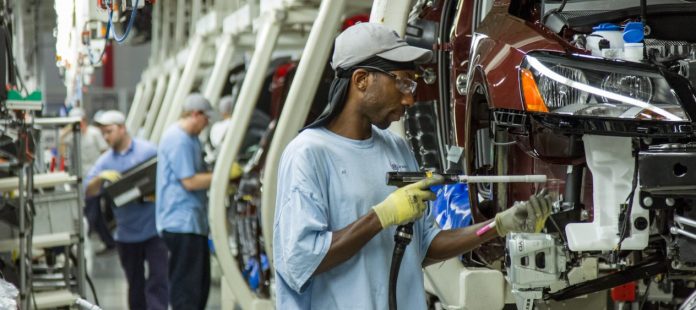The June jobs report is officially here, and it’s one for the ages. 4.8 million payrolls were added last month according to the Bureau of Labor Statistics (BLS). The jobs gain blew away the consensus estimate of 2.5 million, dropping unemployment to only 11.1%, down from 13.3% in May.
That puts the jobless rate slightly above where it was (10%) in October 2009 during the Great Recession.
Unsurprisingly, the market roared in response. The Dow and S&P surged at the open while the Nasdaq Composite hit a new record high.
Since then, however, stocks have given up most of those gains. The coronavirus spoiled the party once again after Reuters reported a spike in confirmed cases. Florida endured the worst of it, seeing 10,000 new infections on Wednesday.
Still, some analysts remain optimistic.
“The direction of the economy is certainly north,” said Jim Paulsen, chief investment strategist at the Leuthold Group.
“I think that’s all it has to do to continue to provide confidence, not only to investors, but also to companies and to consumers.”
And though the jobs data certainly impressed, there was one red flag that stood out:
According to the BLS, permanent job losses continued to rise, up 588,000 to 2.9 million for the month of June.
We’re not seeing economists mention this part of the report today, but it’s extremely important. Permanent job losses are a relatively accurate gauge of economic damage. From March to June, over 20 million jobs were removed from the U.S. labor market.
Thus far, 14.5% of those jobs have been erased permanently. That’s significant, and potentially a major setback for a “V-shaped” recovery. Now, a “swoosh” (or even the dreaded “U-shaped” recovery) seems more likely.

Weekly jobless claims are making matters worse, too. For the week ending June 27th, initial jobless claims increased by 1.427 million, surpassing the analyst estimate of 1.38 million.
That number, according to Bleakley Advisory Group chief investment officer Peter Boockvar, could grow in the coming weeks.
“Don’t expect this to fall that much until the very generous unemployment benefits expire in its current form on July 31st,” he said.
And with many states reinforcing lockdown measures, scores of businesses find themselves in another awkward position. Bars and nightclubs are getting repeatedly “gut-punched” by state governments. Many won’t survive another full lockdown if it comes.
Businesses not directly affected by the reopening rollbacks are faced with significant uncertainty as well. Will they be forced to shut down again at some point? Can they afford to bring back temporarily laid-off workers?
Main Street has more questions than answers at this point concerning the continued Covid-19 outbreak. Wall Street, on the other hand, is getting ready for another market-wide surge. The most recent Commitments of Traders report, which details the holdings of participants in several different futures markets, suggests as much.
Large speculators – Wall Street firms and professional traders – are becoming decidedly less bearish. Small speculators – retail investors – are growing far less bullish.
Typically, this kind of shift is considered a bullish signal. After all, Wall Street is the “smart money.” Us retail investors don’t know what we’re doing by comparison.
And historically, this indicator has proven to be mostly true. But it’s not always accurate 100% of the time. Case in point, large speculators were bearish prior to the post-crash rally. Small speculators saw it coming the whole way and loaded up on bullish positions.
The massive market recovery from March to June may have gone overboard thanks to those small speculators, but that doesn’t change the fact that it did indeed happen. Wall Street kept hedging its bets (or went short), reducing its gains considerably.
Now, it seems like we’re just another bad headline away from a wicked one or two-day correction. If coronavirus cases rise further, that may happen sooner rather than later.
So, as tempting as it may be to buy back in to the bull market narrative – both figuratively and literally – it might be wiser to wait.
Because another lockdown could be on its way, even if that means wounding the U.S. economy in the process.








